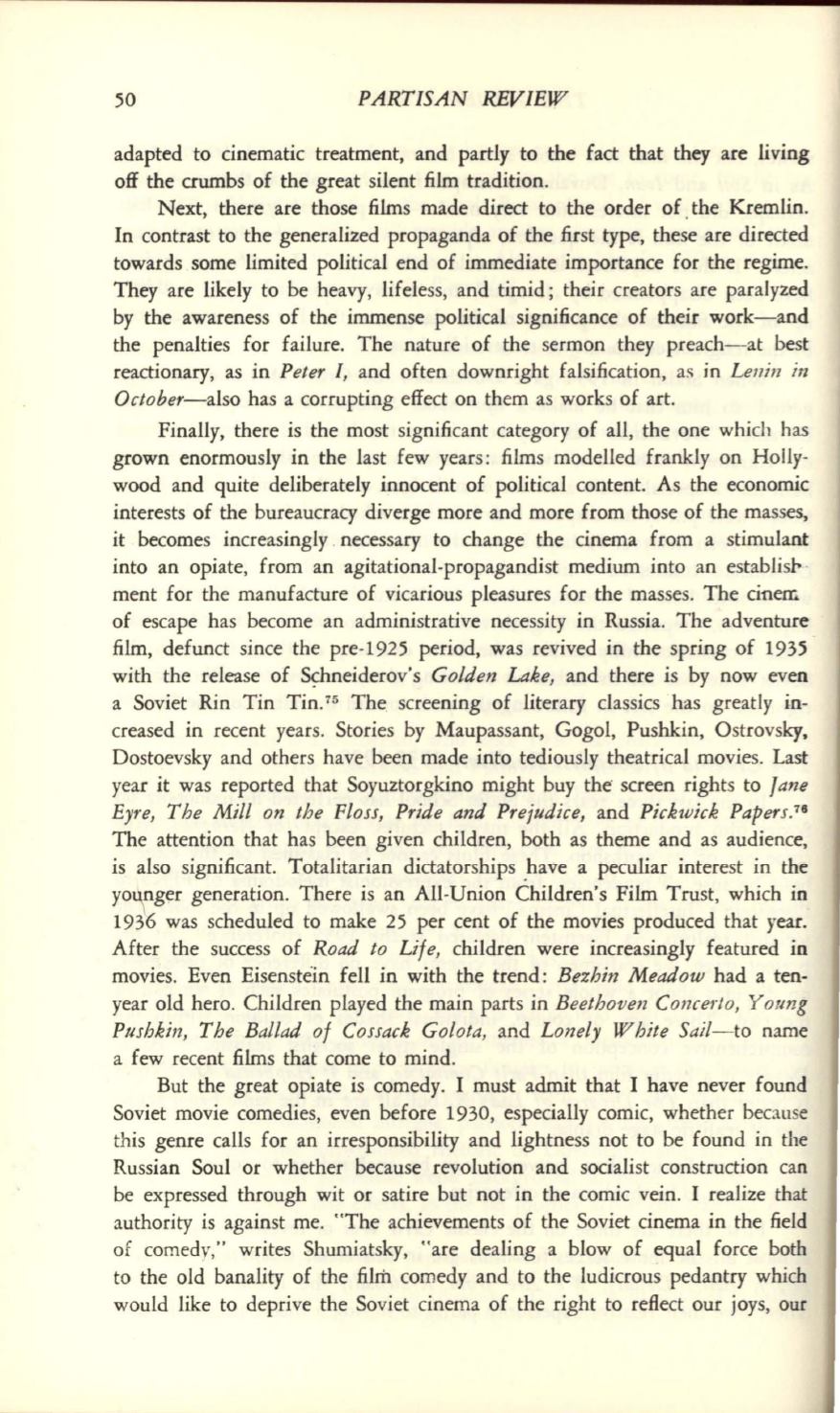
50
PARTISAN REVIEW
adapted to cinematic treatment, and partly to the fact that they are living
off the crumbs of the great silent film tradition.
Next, there are those films made direct to the order of .the Kremlin.
In contrast to the generalized propaganda of the first type, these are directed
towards some limited political end of immediate importance for the regime.
They are likely to be heavy, lifeless, and timid; their creators are paralyzed
by the awareness of the immense political significance of their work-and
the penalties for failure. The nature of the sermon they preach-at best
reactionary, as in
Peter I,
and often downright falsification, as in
Lellin in
October-also
has a corrupting effect on them as works of art.
Finally, there is the most significant category of all, the one which has
grown enormously in the last few years: films modelled frankly on Holly–
wood and quite deliberately innocent of political content. As the economic
interests of the bureaucracy diverge more and more from those of the masses,
it becomes increasingly . necessary to change the cinema from a stimulant
into an opiate, from an agitationaI-propagandist medium into an establisr '
ment for the manufacture of vicarious pleasures for the masses. The cinem
of escape has become an administrative necessity in Russia. The adventure
film, defunct since the pre-1925 period, was revived in the spring of 1935
with the release of Sfhneiderov's
Golden lAke,
and there is by now even
a Soviet Rin Tin Tin. 75 The. screening of literary classics has greatly in–
creased in recent years. Stories by Maupassant, Gogol, Pushkin, Ostrovsky,
Dostoevsky and others have been made into tediously theatrical movies. Last
year it was reported that Soyuztorgkino might buy the screen rights to
Jane
Eyre, The Mill on the Floss, Pride and Prejudice,
and
Pickwick Papers.
78
The attention that has been given children, both as theme and as audience,
is also significant. Totalitarian dictatorships ,have a peculiar interest in the
yo~nger
generation. There is an All-Union Children's Film Trust, which in
1936 was scheduled to make 25 per cent of the movies produced that year.
After the success of
Road to Life,
children were increasingly featured in
movies. Even Eisenstein fell in with the trend:
Bezhin Meadow
had a ten–
year old hero. Children played the main parts in
Beethoven Concerto, Young
PflSiJki/Z, The Ballad of Cossack Galata,
and
Lonely White Sail- to
name
a few recent films that come to mind.
But the great opiate is comedy. I must admit that I have never found
Soviet movie comedies, even before 1930, especially comic, whether because
this genre calls for an irresponsibility and lightness not to be found in the
Russian Soul or whether because revolution and socialist construction can
be expressed through wit or satire but not in the comic vein. I realize that
authority is against me. "The achievements of the Soviet cinema in the field
of comedy," writes Shumiatsky, "are dealing a blow of equal force both
to the old banality of the film comedy and to the ludicrous pedantry which
would like to deprive the Soviet cinema of the right to reflect our joys, our


